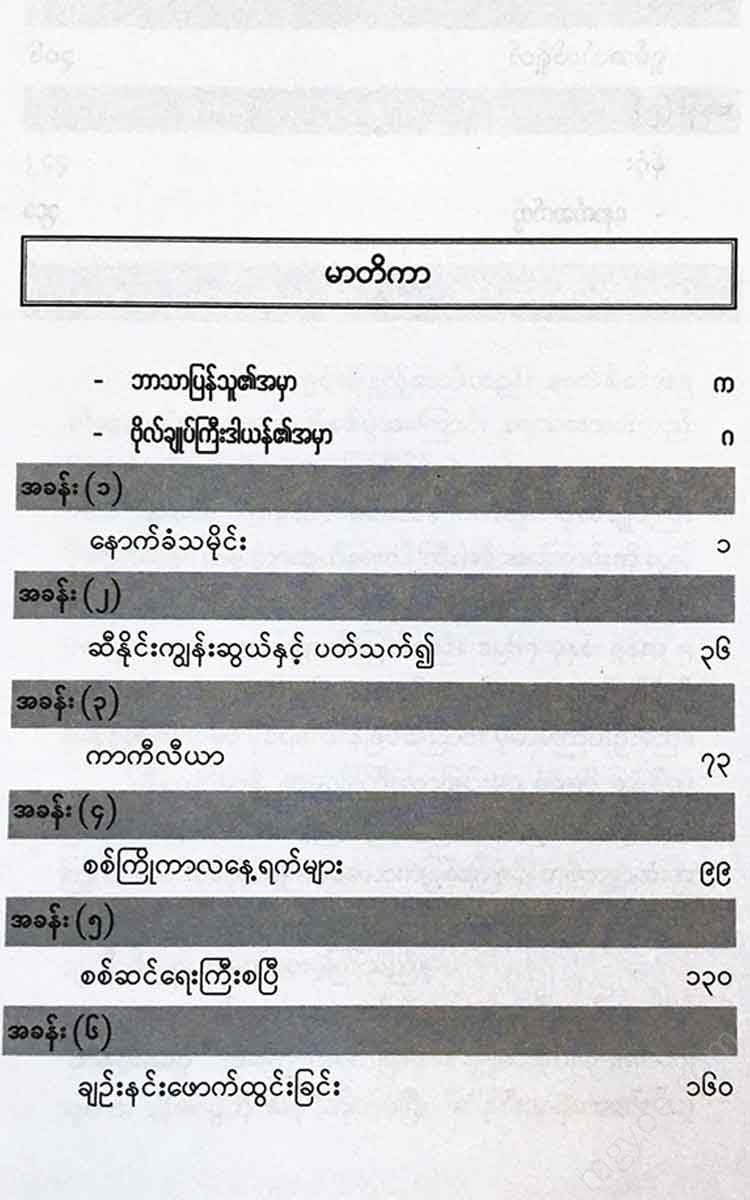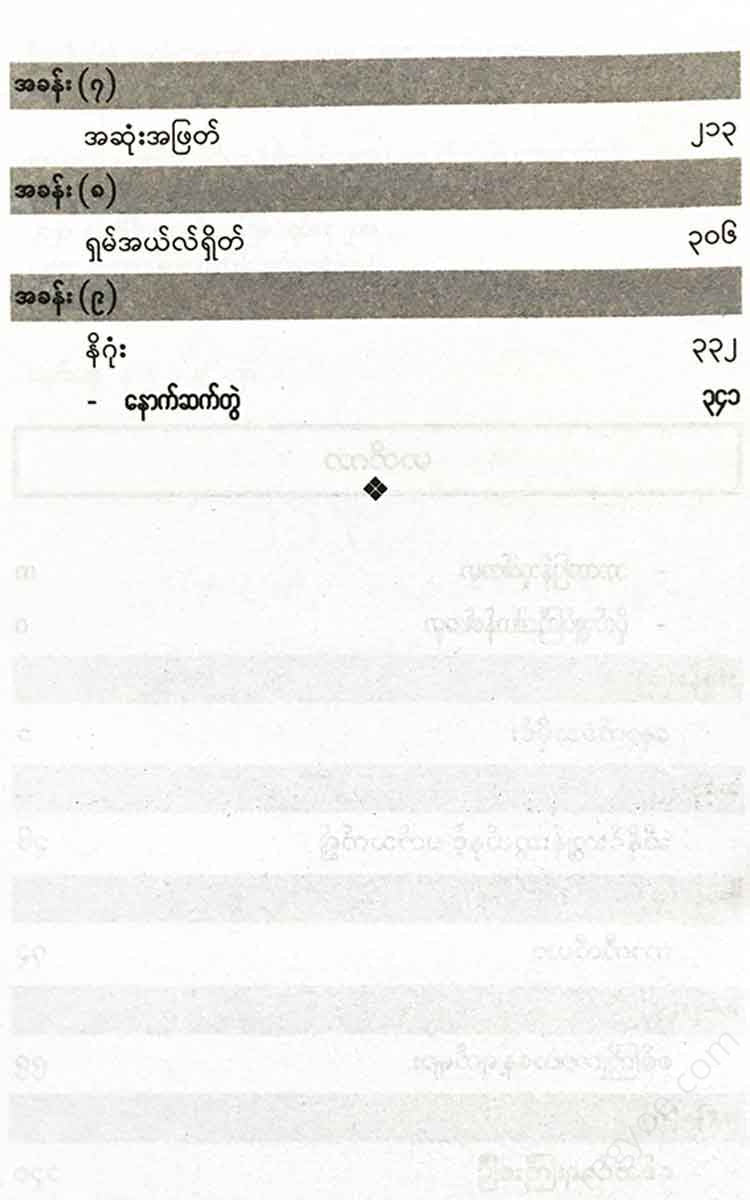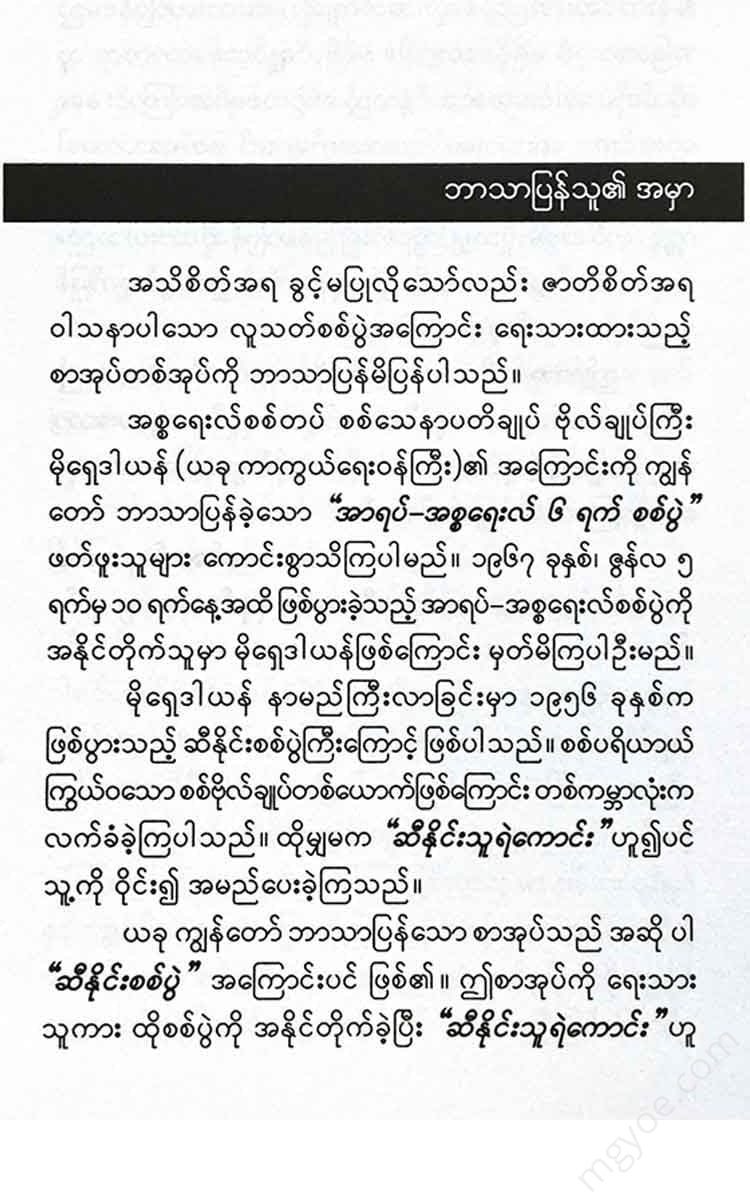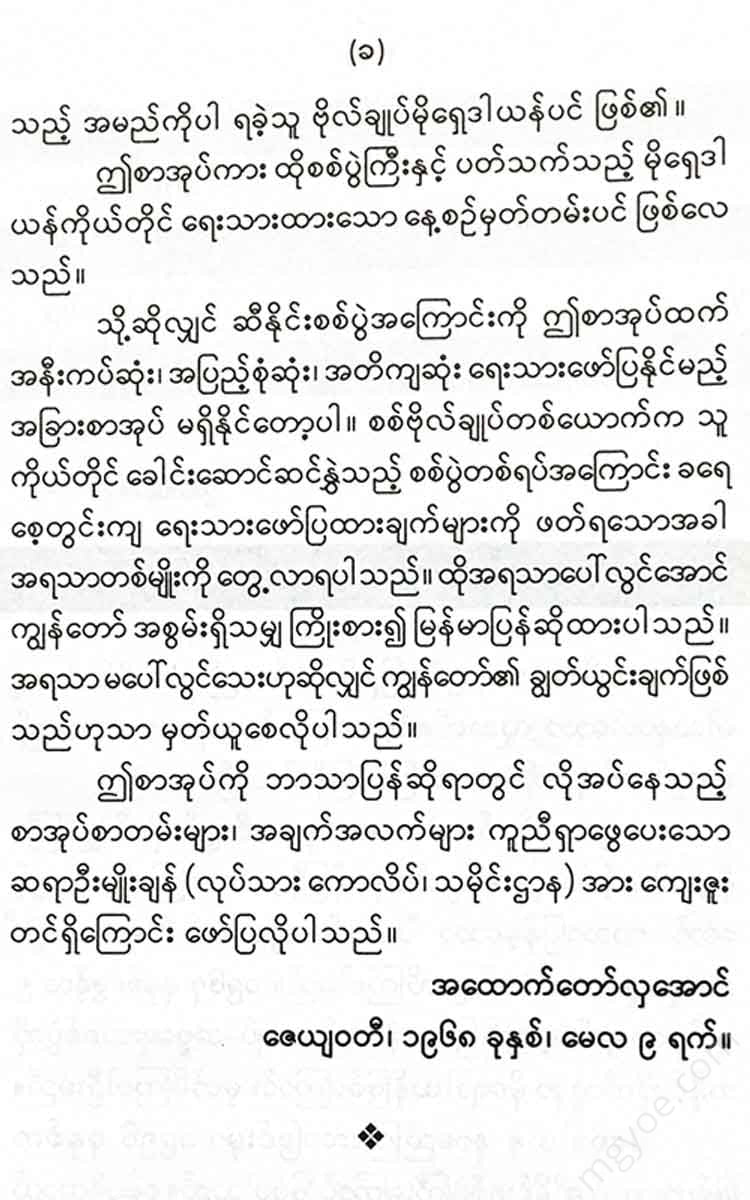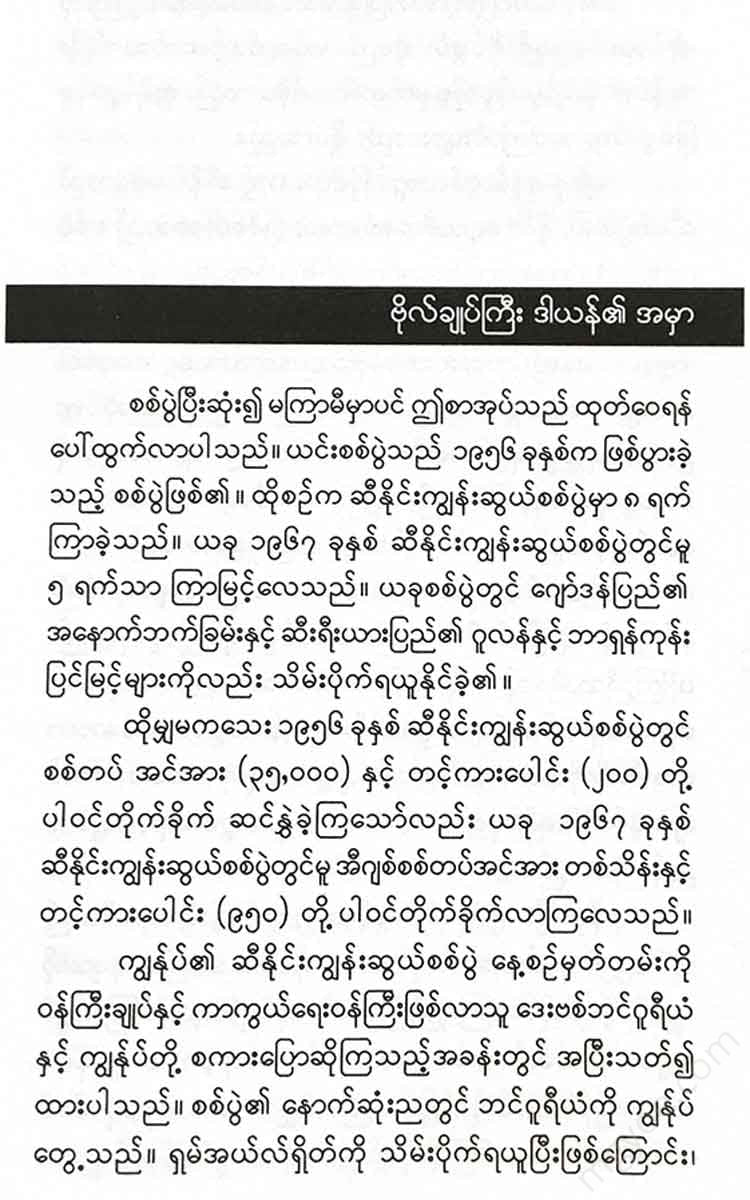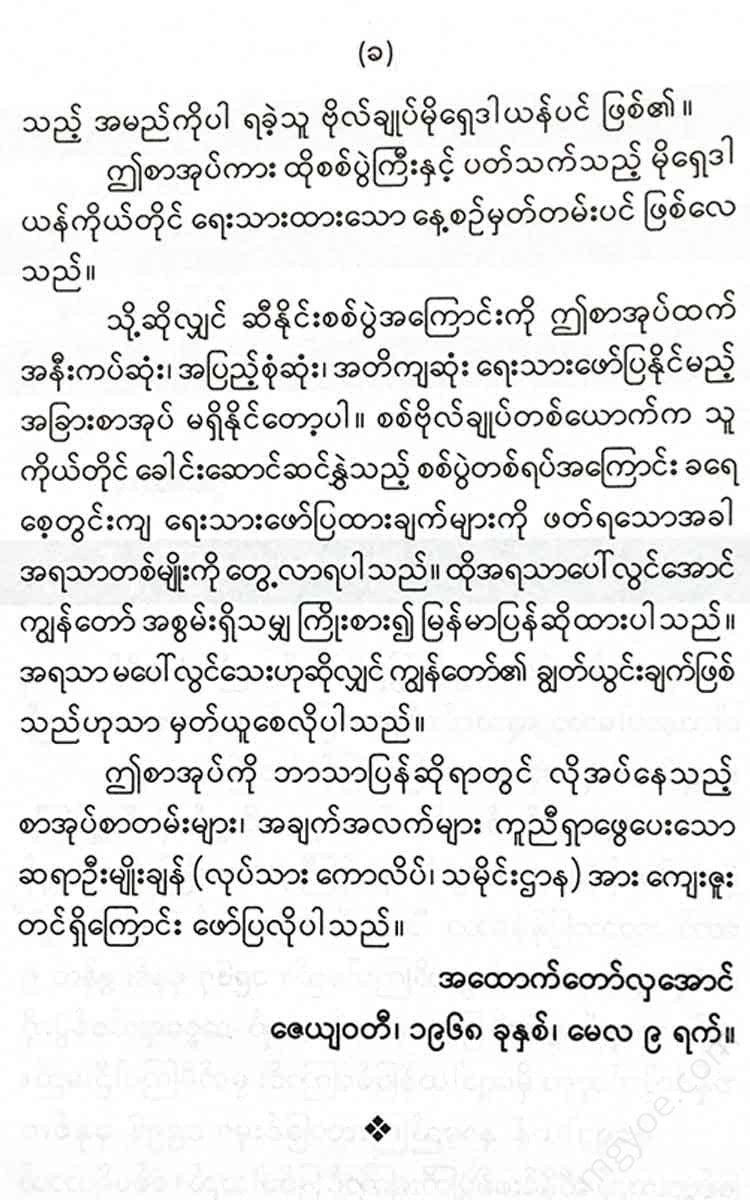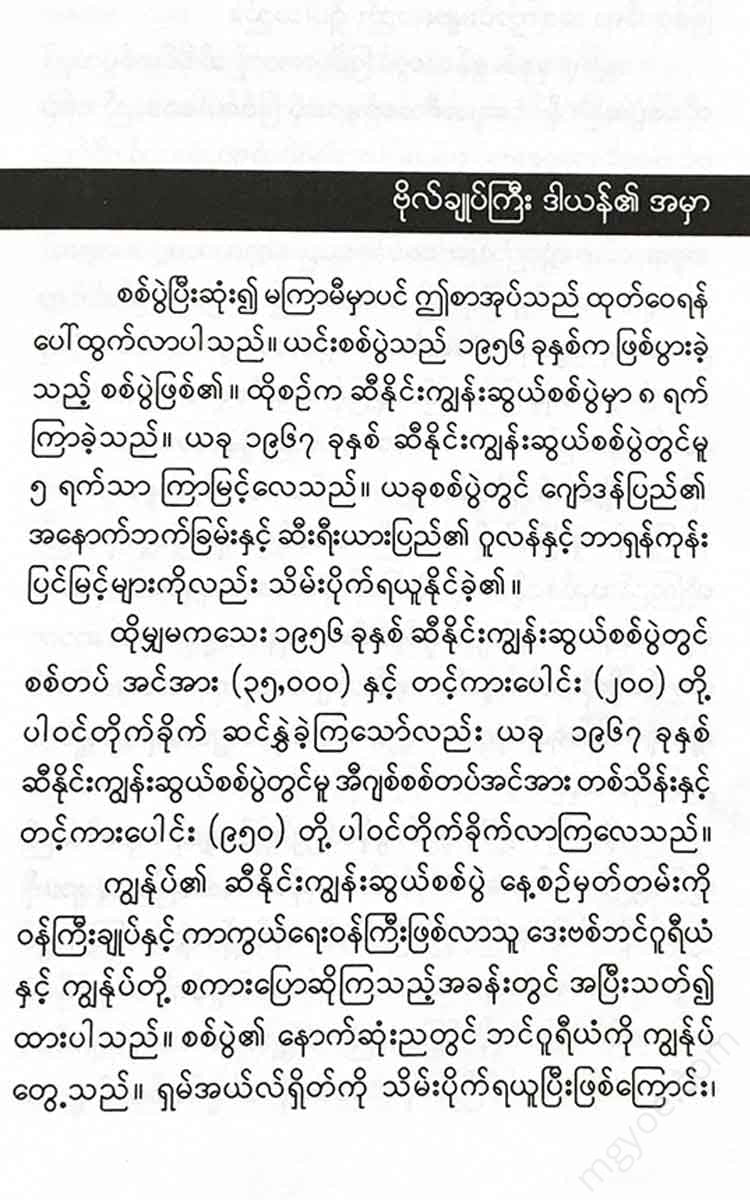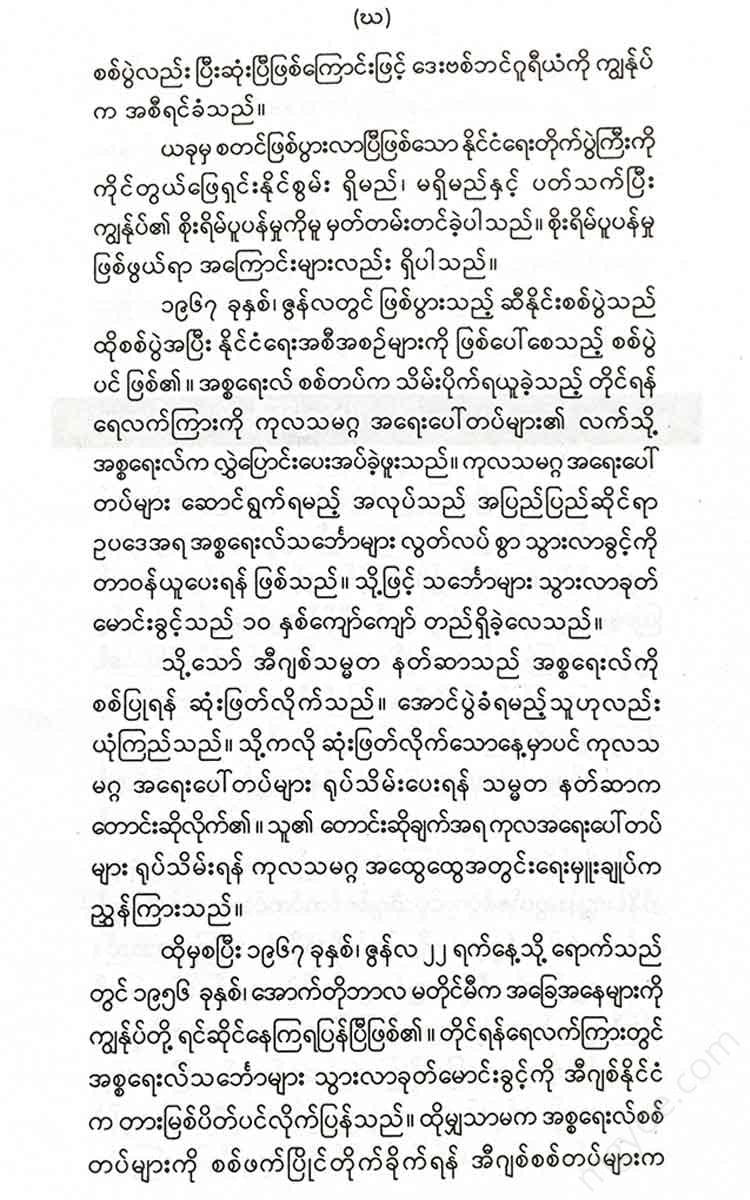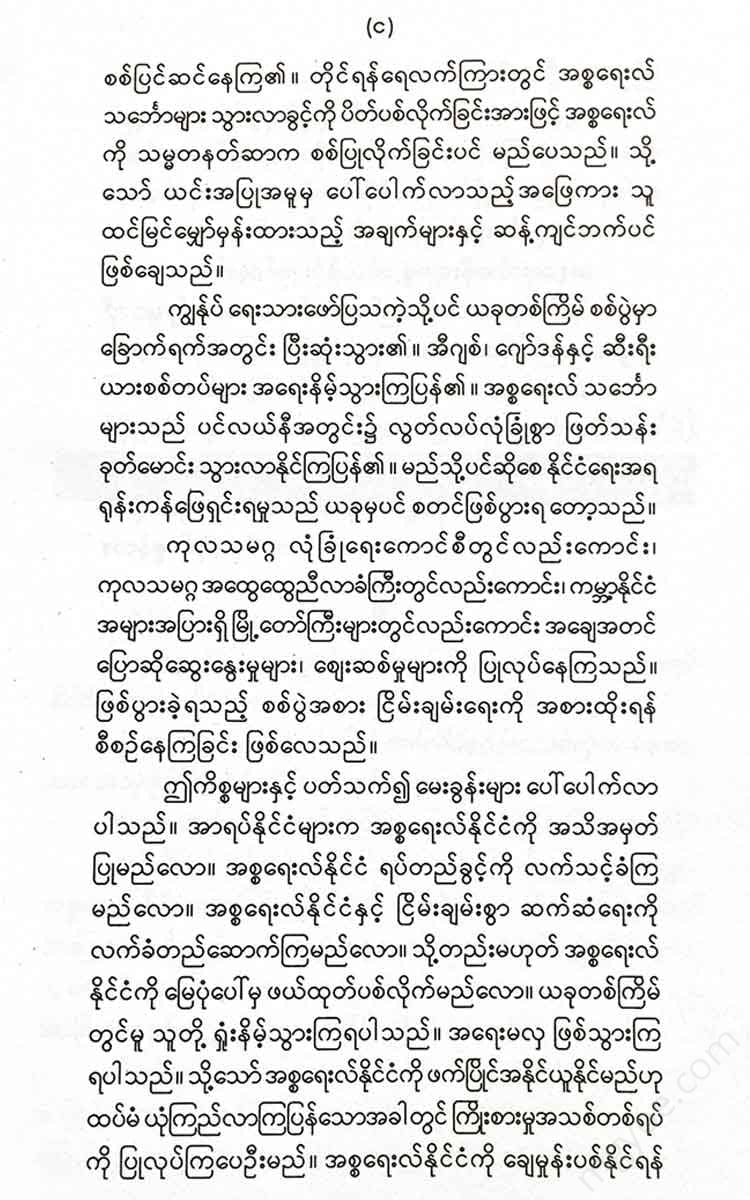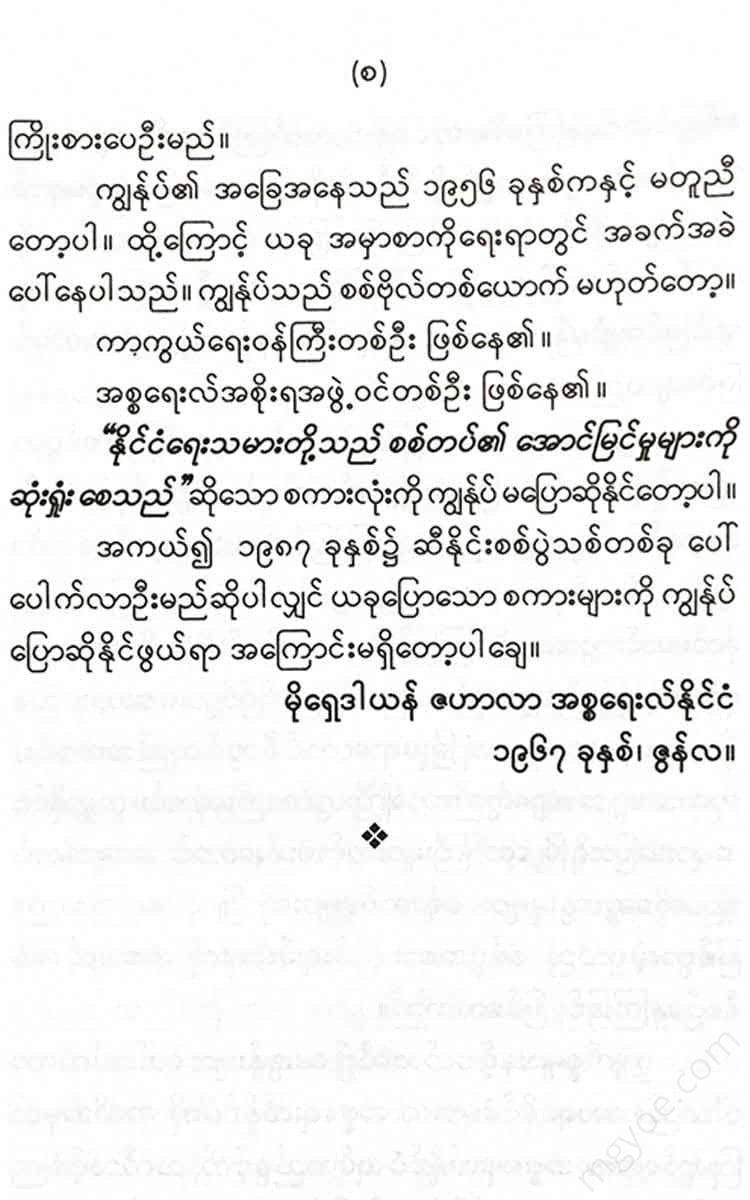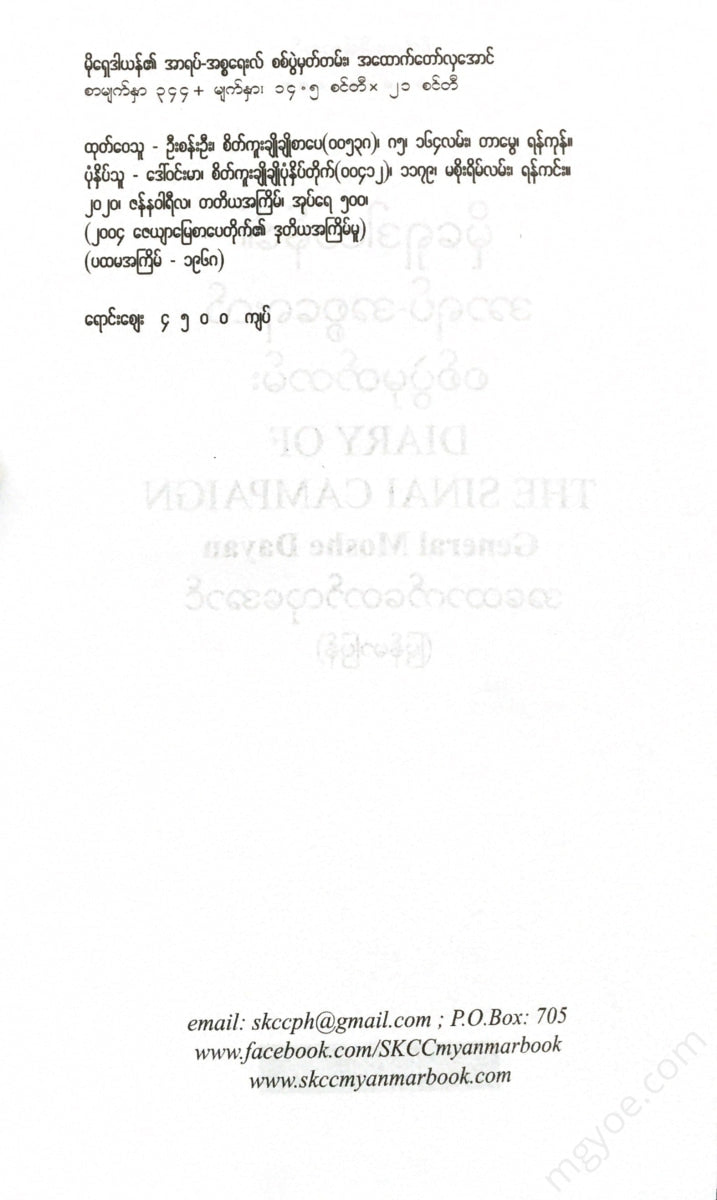စိတ်ကူးချိုချိုစာပေ
Athitaw Hla Aung - Moshe Daran's History of the Arab-Israeli War
Athitaw Hla Aung - Moshe Daran's History of the Arab-Israeli War
Couldn't load pickup availability
Chapter (1)
Background
(1)
The Sinai War is
Political and security conflicts between Israel and its neighboring Arab countries.
The British and French decide to use military force to secure the Suez Canal Zone.
It emerged for two reasons.
If England and France were not to join the fight, there is reason to doubt Israel's willingness to wage this war. If Israel were to fight, its military and political forms and essences would be different from the current situation.
Unless the Arab countries led by Egypt continue to pursue a course of hostility and hostility toward Israel, Israel will have no reason to take up arms. Despite Egypt's military confrontation with Britain and France over the Suez Canal issue, Israel is far from immune.
The British and French launched a "military campaign" in the Suez Canal Zone. Israel launched a war in the Sinai Peninsula. The connection between these two major campaigns is now described in the daily report. However, it is necessary to describe the reasons why Israel decided to engage in such a war.
After our War of Independence, Israel and the Arab countries signed an armistice in 1949.
Now, Arab leaders have renewed their ambitions to attack Israel and wipe it off the map. Not only have they refused to abide by the terms of the armistice agreement and establish peace, but they have also been active on the border, attacking Israeli civilians, and committing acts of aggression even after the ceasefire. These acts were initially viewed by the Israeli government as acts of war and remnants of war. They have called on Arab countries to respect the terms of the agreement. Israel has also adopted a policy of tolerance and restraint.
However, by the middle of 1954, anti-Israeli terrorism was getting worse and worse. In the following months, it became increasingly clear that these incidents were not the work of individuals, but were being carried out systematically by a group, and that Egypt was responsible for the aggression and that the Arab governments recognized it. Israel was beginning to understand the reality. The security situation was getting worse and worse. It had been growing steadily since the days of the war in 1948 and now reached a critical point in 1955-56.
The three main reasons for this tension are: Egypt's preparations for a war that would completely destroy Israel, the threat of Israel using trained guerrillas from Arab countries, and the blockade of Israeli ships in the Gulf of Aqaba.
(2)
The arms deal between Egypt and Czechoslovakia in September 1955 was tantamount to Egypt's decision to go to war with Israel. Egypt received a large amount of modern military equipment from the Czech Republic. Israel understood that this military equipment reinforced Egypt's intention to go to war with it, and that it was preparing for war. Israel was determined to prevent the Arabs from acquiring large amounts of modern military equipment as soon as possible and to exploit it militarily.
The Czechoslovak military equipment that Egypt acquired included 530 armored vehicles, 230 tanks, 200 armored personnel carriers, 100 artillery pieces, 500 artillery pieces of various sizes, 200 fighter, bomber and transport aircraft, warships, destroyers, torpedo boats and submarines, and a wide range of military equipment.
This military equipment was the most powerful in the entire Middle East at that time. It was a force far greater than anything that had ever existed before. By adding this weapon to Egypt's existing military strength, the military strength of Israel and the Arab countries became incomparably greater. Originally, Egypt had 200 tanks. Israel had 200 tanks.
Now, not including the strength of other Arab countries, Egypt alone has four times the armored vehicle strength of Israel.
The same is true of the air force. Previously, Egypt had 80 jets, while Israel had only 50. Now, Egypt has 200 fighter and bomber jets. As a result, the air force is four times larger. In terms of artillery, naval power, and combat weapons, Israel's strength is not encouraging. Egypt is not only superior in numbers, but also in terms of modernity and efficiency.
The Egyptians have at least two times better fighter jets and Ilyushin planes than the Israeli Meteor and Orawin planes. They are more powerful and modern. Their Russian-made T-34 tanks are much better than the old M3 Shaman tanks we have.
As his military power grew, Nasser's prestige and influence among the Arab people increased significantly. He was also widely recognized as a prominent leader within the Arab League.
On October 19, 1955, the Egyptian-Syrian Joint Military Directorate was launched. By October 1956, as expected, Jordan had joined, forming a three-nation Joint Military Directorate.
Under such circumstances, Israel was once again confronted with the reality of its situation, caught between three enemy Arab armies, each under the command of a single commander in the east, south, and north. Faced with three united and invading armies, there was no longer any doubt as to whom to directly oppose.


